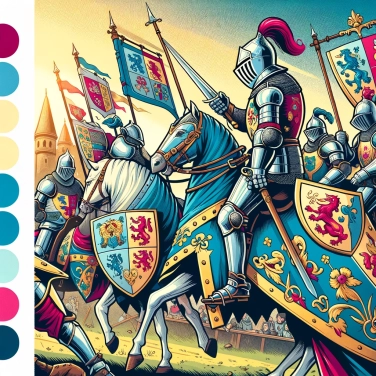In detail, for those interested!
To display their identity
Knights wore coat of arms on their armor to display their identity in a distinctive way during battles and tournaments. These coats of arms, often colorful and adorned with distinctive symbols, allowed fighters to easily recognize each other on the battlefield and differentiate their allies from their enemies. In addition to serving as a visual identifier, coats of arms were also a means for knights to socially distinguish themselves and highlight their status and belonging to a noble lineage. This practice dates back to medieval times and lasted for centuries, until dress codes evolved and the use of coats of arms on armor was gradually abandoned.
To symbolize their lineage and their achievements
The coats of arms on the armor of medieval knights also served to symbolize their lineage and their exploits. Each coat of arms was unique and represented the family's heraldry to which the knight belonged. These heraldic symbols were passed down from generation to generation, reflecting the history and lineage of the family. Furthermore, the exploits and deeds of a knight could be added to the family's coat of arms to honor his achievements on the battlefield. Thus, the coat of arms became a true symbol of prestige and renown for the knight and his lineage.
For practical reasons on the battlefield
Coats of arms on the knights' armor were also utilitarian on the battlefield. They served to easily identify the different fighters, especially during large battles where it was crucial to quickly distinguish friends and enemies. Coats of arms thus helped to avoid friendly fire and recognition errors, contributing to limiting chaos and unnecessary losses. In addition, the bright colors and distinctive patterns of the coats of arms were easily recognizable from a distance, facilitating troop coordination and visual communication within armies. Thus, coats of arms were not only symbols of identity and belonging, but also practical tools for organizing and orchestrating the movements of fighters on the battlefield.
![Explain why some countries change time zones?]()
![Explain why Alexander the Great refused to wear shoes.]()
![Explain why Alexander the Great always wore an impressive helmet.]()
![Explain why the last Chinese emperor was so young when he came to power?]()





















